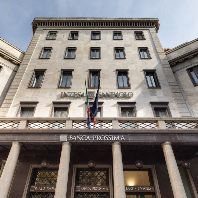The weighted average European prime office yield moved out 20bps from 5.8% at the end of 2008 to 6.0%, a much smaller increase than the 50bps movement between Q3 and Q4 2008, according to Jones Lang LaSalle's Q1 2009 European Office Yields Report. The yield range across Europe continued to widen both between core and emerging markets and within core markets.
Jones Lang LaSalle believes that some markets, typically core markets which have already seen large price corrections, are now within touching distance of their prime yield ceilings in the current cycle, and expects many of those markets to reach that point by the end of the year, including London and Paris; yields could even move in marginally in some cases.
Looking ahead, Tony Horrell, Head of European Capital Markets at Jones Lang LaSalle said: "This view that some markets are close to their prime yield ceilings is largely based on improving buyer sentiment for the best quality product, where investors believe yields have reached a level where they feel confident to transact. It also represents investors seeking to secure the very best assets before the bottom of the market on the assumption that the best assets are typically traded before markets begin to pick up again."
Petra Blazkova, Associate Director, European Research at Jones Lang LaSalle commented: "In core western Europe we are now starting to see early signs of prime office yields stabilising in some markets as sentiment has begun to improve. Across the region the pace of outward yield movement slowed in Q1 2009 and in many markets yields stood still over the period (25 markets out of a survey total of 44 saw stable yields over the quarter) although this was typically on the back of large corrections towards the end of 2008 and in some cases is sentiment based because of thin trading."
German and Italian markets have continued to show the smallest outward yield movements since the start of the market decline moving by around 50-60bps on the year; all German markets remained stable over the quarter with Milan moving out by just 15bps and Rome also remaining stable. Bucharest, Dublin, Moscow and St Petersburg saw the largest outward movement on the quarter, all moving by 50bps.
Improving investor sentiment is most obvious in Central London markets where we have begun to see increased transaction activity and a higher level of bidding. Prime yields in London City remained stable on the quarter having moved 125bps year on year (Q1 2008 Q1 2009). London's West End moved out 25bps on the quarter and 100bps between Q1 2008 Q1 2009. The only market where yields moved in was Edinburgh which saw a 25bps movement on improving sentiment, although this was on the back of a particularly negative outlook at the end of 2008 where yields moved out 100bps on the quarter to Q4 2008.
Although transaction activity is marginally up in London, transaction activity across Europe remains low and prime yield figures are now, in many cases, based more on sentiment than evidence. International investors are today firmly focused on core liquid markets including London and Paris and on lot sizes in the 3070 million range (although the City of London has seen strong bidding at some larger lot sizes).
Tony Horrell continued: "Despite improving sentiment in some markets, capital is chasing a narrowing definition of prime which is not only defined as the best quality building in the best location but is also exclusive to properties with long lease terms and strong covenants. In an environment of falling rents investors are also keenly aware of the need to carefully price over-rented assets. Yields continue to move out for an increasing range for secondary product and so whilst we are seeing a demand overhang for an ever decreasing universe of prime assets, we are simultaneously seeing a severe lack of demand for an ever widening range of secondary assets."
He concluded: "Until confidence in the market and the economy returns, and debt availability increases, active investors will pick out only th







